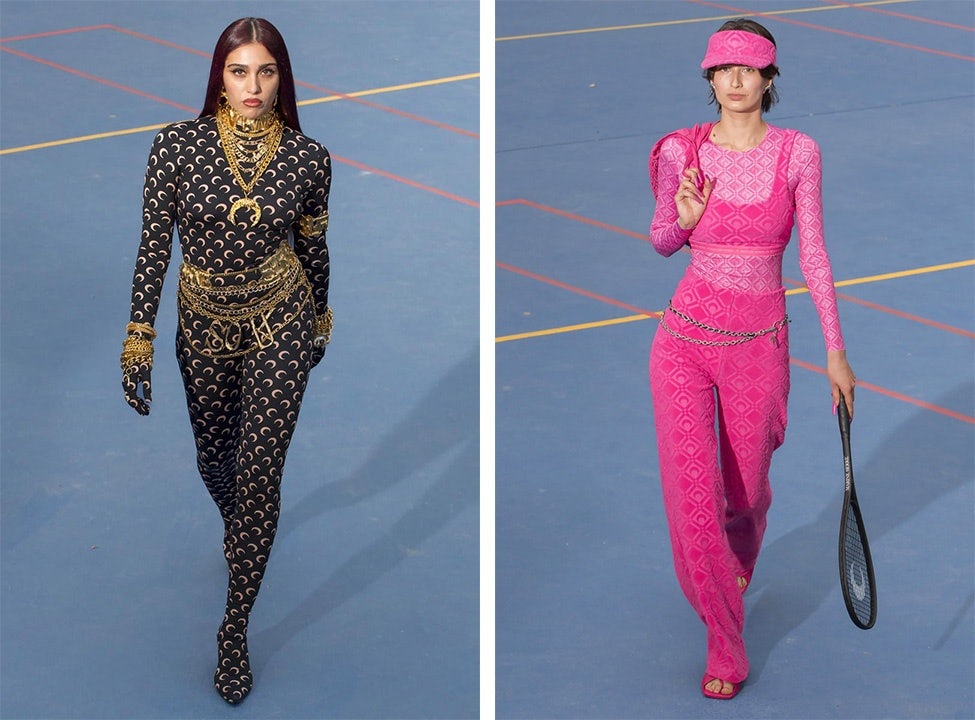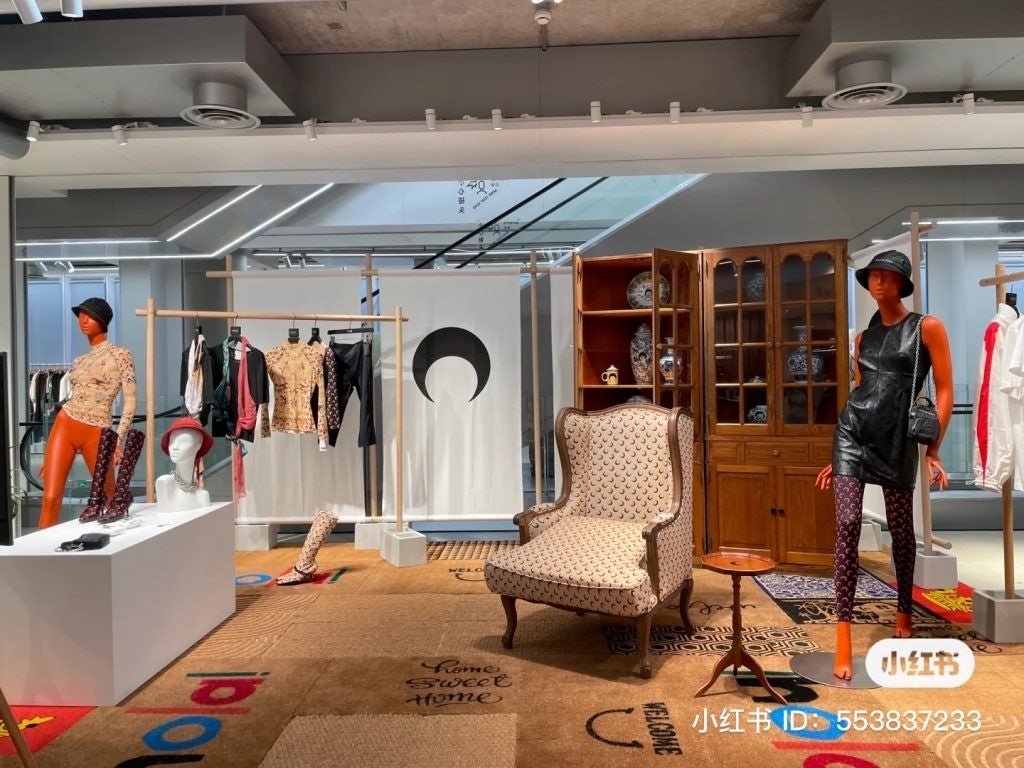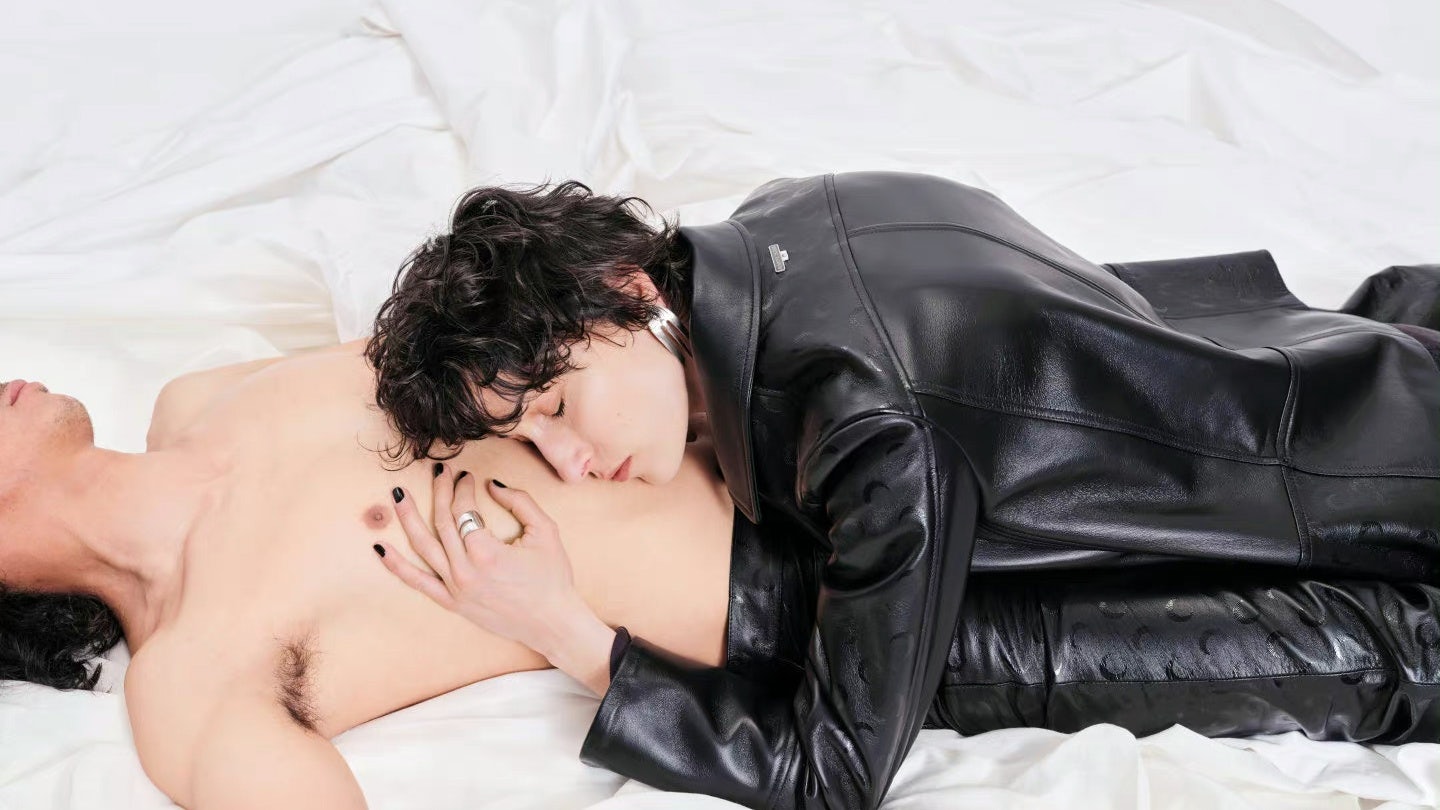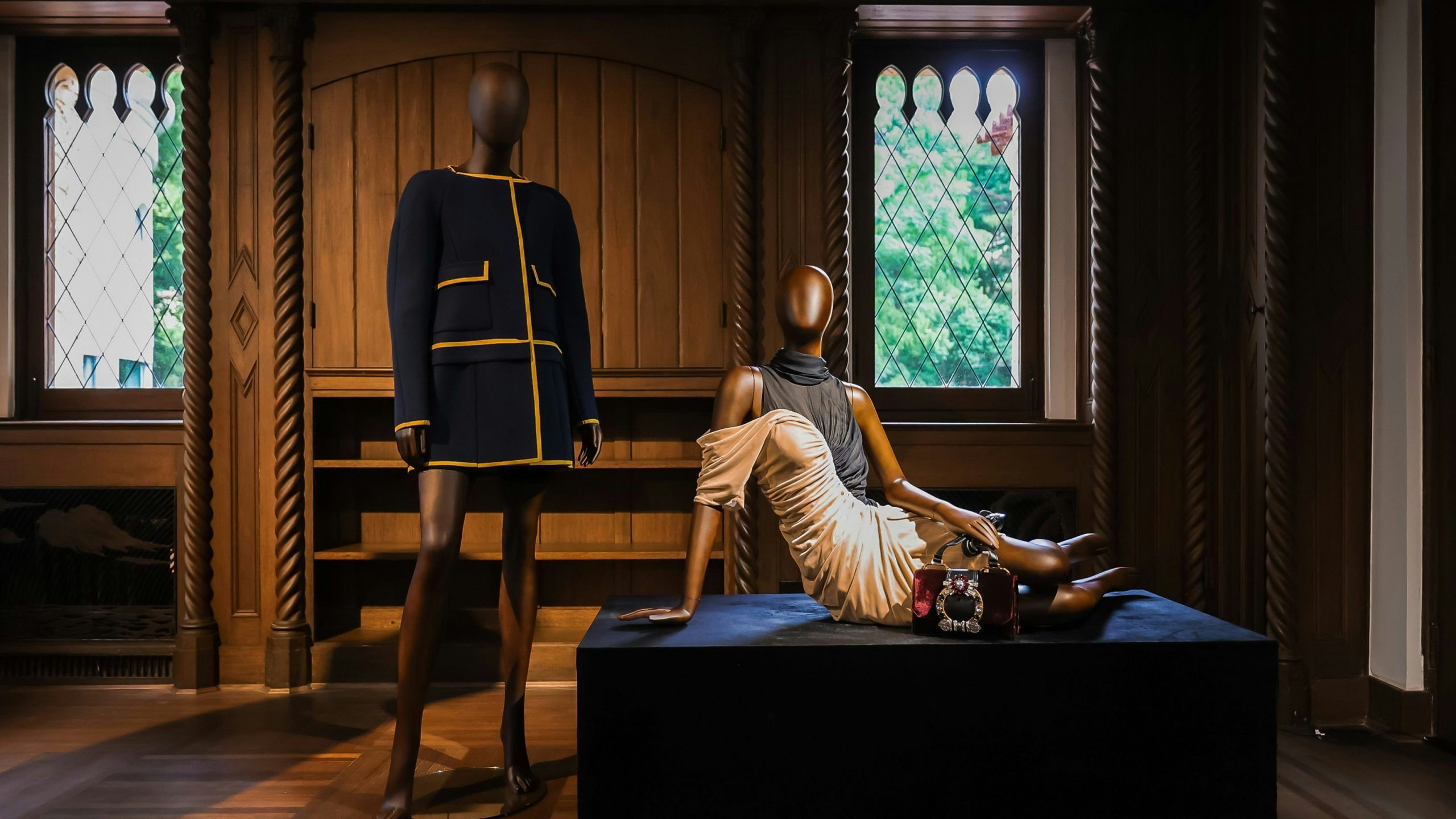Heading to Marine Serre’s studio on a blistering hot sunny day, Paris couldn’t look better. The 19th, quite far out from the center in the capital’s northeast, might not be for everyone — but it’s perfect for this young brand.
It’s been six years since the prodigious designer (then just 24) burst onto the fashion scene, and only five since she scooped a coveted LVMH Prize. After that win, such was the excitement that she had industry peers visiting her bedroom for a chance to see the collections. What people loved was her vision and then, as now, this revolved around two key aspects: a sustainable, regenerative business model (via upcycling dead stock and recycling fibers) and the iconic crescent moon logo.

But what’s most notable is that her founding principles haven’t wavered. “This is really something new, that no one in the industry did, made garments out of older fabrics…Or if they did it was only Martin Margiela, and it was couture or artisanal,” she says as she gets stuck into various bags of fabrics, opening and inspecting their contents. She chats casually with colleagues beside us at the table, laboriously and precisely grading garments and fabrics. Everything is done according to the processes Serre developed for her pioneering recycling system, which is, by her own admittance, “tiring.”
The result of this is an original approach to artisanal manufacturing, one which maximizes the quantities of what are still unique, high-concept pieces. These range from handcrafted, asymmetric, patchworked silk dresses that seem to defy proportions to printed jersey bodycon all-in-ones in signature moon repeats. She’s been profitable, too. Still independent and family-run, 2021 revenues were over 15 million (103 million RMB). Sixty-seven employees, averaging in age at 33, work in the 3000-square-meter headquarters. And she's recently expanded into menswear, which accounted for 36 percent of sales last year.
Now, she’s slowly sounding out the China market with the launch on August 4 of a dot.cn website, its new homepage dedicated to the Qixi (七夕节) festival. In the run-up to this, Marine Serre and Hangzhou’s concept store B10ck co-launched a temporary installation of her Spring 22 collection. The pop-up’s vibe was inspired by the concept of home, and featured an armchair with the designer's trademark moon (which quickly became an instagrammable hot spot for young shoppers). One look around her studio makes it clear where this came from: the space is framed with big, comfortable-looking couches patterned with the same symbol. On the wall, a cork board pinned with magical trinket keyrings (little cups, penknives, eyewear) once owned by her grandad. The idea of reusing, repurposing, and recycling is everywhere you look, both in Paris and China.

Sustainability expert Shaway Yeh believes there is a space in the market for Serre, particularly with regard to her more fashionable approach to upcycling and sustainable production. “Of course, people have this awareness of it, but it's still only a small proportion of the population. If you don’t see it in your environment, it won't have a great influence. That’s why we need designers like her,” she explains.
From the top down, the mainland is also, albeit very slowly, coming round to the idea of pre-worn items — spurred on partly by the pandemic and an uptick in the secondary resale market. According to an announcement from China’s National Development and Reform Commission (NDRC) in April 2022, the country is looking to produce two million tonnes of recycled fiber annually within the next three years, and to recycle a quarter of the 22 million tonnes of textile waste accrued every year.
According to a report by market research agency Daxue Consulting, 89 percent of Gen Z and 90 percent of Millennials have altered their shopping decisions due to environmental sustainability concerns at least once over the past six months. Similarly, over three quarters of Chinese consumers (from all income backgrounds) were inclined to spend more, and 20 percent of upper-class consumers were willing to pay double for environmentally friendly fashion products.
This bodes well for the likes of Serre, as Yeh affirms, “If she can share these resources this could be a great contribution to the system. Maybe she can work with some local names, source the local material here, train people, and localize the upcycling process… I think it would be a great move if she can build a community here focused on knowledge sharing because it’s hard to do upcycling well.”
She’s certainly no stranger to the market. Luxury retailer Hug in Chengdu was the brand’s first local stockist, with current distribution in Greater China covering 42 doors (of a total 225 worldwide). The fact that her official Weibo account has only 4,500 followers doesn’t do justice to the line’s popularity here. In 2019, a spot featuring celebrity actress Yang Mi (renowned for her fashion sense) gave it explosive exposure; and there are over 6,900 UGC instances of consumers showcasing their Marine Serre looks on the lifestyle platform Xiaohongshu.
Alongside the boost from Yang Mi, her pieces have been worn by pop stars Yuxin Liu and Bibi Zhou, as well as top-tier influencers like Mia Kong and Fil Xiaobai — thanks largely to the appointment of agency Seiya Nakamura 2.24 Inc. for wholesale and PR strategy. Renowned stylist Lucia Liu states that this alignment with KOLS could set it up well domestically. “She has a very unique personal aesthetic which is underpinning her brand identity. I see that in how she mixes patterns, and her logo, with pure, sleek cuts. And the people seen in her clothes are an authentic extension of this edginess.”

However, like many other names in the market, the company faces the thorny issue of counterfeiting. Searching "Yang Mi same look moon" or 杨幂同款月亮 on the Taobao marketplace yields over four pages of results, each with 80 product posts mostly selling copycat tops at low prices (generally 7 to 44 or 50 to 300 RMB). Trademark issues are often a cause of frustration for groups in China, the recent win for Manolo Blahnik for one — but this wasn’t without a decades-long battle.
But with the label focused mainly on wholesaling, is this such an issue? Tom Griffiths, business director of Chinese data and e-commerce provider EQI Data, points out that in fact, there are some silver linings to being copied. “Firstly, it means that the brand has a big enough buzz in China to be on the radar of the trend-spotting trademark squatters — perhaps a small consolation but potentially meaningful down the line.” And secondly, he notes that designers can take comfort that many Chinese consumers, particularly consumers of luxury products, “don’t want to buy fakes.”
In Griffiths’ experience, “consumers go to great lengths to avoid being caught out by knock-off products, such as buying overseas directly or through agents.” Ultimately, this means a brand like Marine Serre will have a dedicated consumer who is probably willing to go the extra step to ensure they’re getting an authentic product. And after all, how bad is that?
As the interview draws to a close, it’s clear that whether she’s in the sorting room sifting through dead stock, or collaborating with the Ellen MacArthur Foundation, Marine Serre is the real article. And she’s not only here for the love of her craft, but to disrupt the entire fashion system. As I walk back to the city center, I keep thinking about one thing she said: “that I like to make that type of garment, that you keep… that you never get bored of.” In an industry propped up by endless consumption, this is so refreshing, even revolutionary. Now, the question is, can she get China on board?

